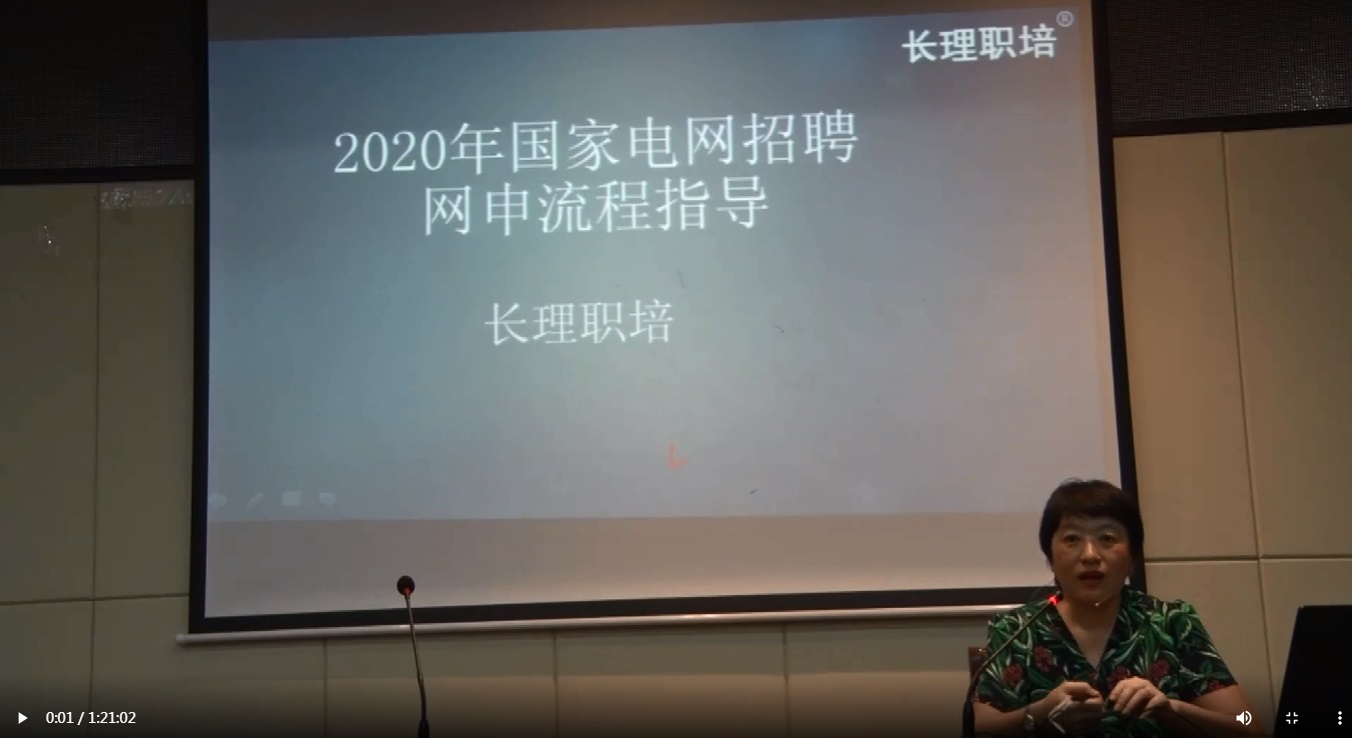三.情态动词的完成式:
can/may/should/ought to/must/need等动词称为情态动词。情态动词有三大特征:一是无人称和数的变化,二是后面跟的动词不带"to",三是后面+not构成否定式,比较:
He needn't go there so early.(他不需要去那么早。-情态动词)
You do not need to be an expert to make this simple design.(这么简单的设计不一定非要专家来做。-动作动词)
在讲解"情态动词完成式"前,先将一般式中应注意的几个问题提一下,以引起必要的重视。
1.情态动词一般式中应注意的几个问题:
注意以下用法的习惯与区别:
He must be a doctor.(他准是个医生。)
否定:He can't be a doctor.(他不会是个医生。-注意:一般不用must'be)
又如:They can't be working now.(现在他们不可能在工作。)
May I go now?
回答:Yes,please./Please don't.(或:No,you mustn't)
have to与must
1)当强调"外界原因"时,2)当与"将来时"结合时,用have to,
例如:
Since it is raining,we have to sty indoors.
You will have to hurry if you want to catch the 9:30 train.(你要是赶9:30的火车,得赶紧。)
3)表示自然规律或必然结果,用must,
例如:
All men must die.(人固有一死。)
can与be able to第七讲倒装、省略、强调、语序
1.倒装:
英语的一般语序为:主语+谓语动词+宾语(或表语)+(状语等附加成分)。有时为了语法上或修辞上的需要而改变这种语序,如将谓语动词放到主语的前面,就称为倒装。因语法需要的倒装称为"语法倒装",例如英语中的疑问句多采用倒装形式,如Are you a doctor or an engineer?因修辞需要,如为了强调、句子结构均衡或承上启下等目的倒装,称为"修辞性倒装",例如On the top of the hill stands a pretty little house.(山顶上有一座漂亮的小屋。)。
就应试而言,以下倒装现象应给予特别注意(按考试中出现的频率高低顺序排列):
1)not,not until,never,no,no sooner,seldom,hardly,scarcely,little,few等否定词开头的句子,比较:
例1
正常语序:I shall never forget the first days at college.
倒装语序:Never shall I forget the first days at college.
(我永远不会忘记初上大学的那些日子)
例2
正常语序:I did not have any idea what market economy is until recently.
倒装语序:Not until recently did I have any idea what market economy is.
(直到最近我才知道什么叫市场经济。)
以上两个句子采用倒装语序的主要目的是为了强调。
在这一节中,要特别注意以下三个倒装句型:
not until…,见以上例2
no sooner…than…,例如:
No sooner had she finished reading the poem than the students began to ask her questions.
(她刚念完这首诗,学生们就开始向她提问题了。)
hardly…when…,与no sooner…than…句型的意思和用法相同,就是不要把搭配搞错了,既:
Hardly had she finished reading the poem when the students began to ask her questions.
2)介词+no否定词开头的句子,比较:
正常语序:I shall not do anything against the interests of the country under any circumstances.(不管在什么情况下,我决不做有损国家利益的事情。)
倒装语序:Under no circumstances shall I do anything against the interests of the country.
3)only,so/such(…that…),often等词开头的句子,比较:4)
正常语序:We can learn a foreign language well only in this way.
倒装语序:Only in this way can we learn a foreign language well.
(只有这样我们才能学好一门外语。)
正常语序:The stain was so small that I could hardly see it.
倒装语序:So small was the stain that I could hardly see it.
(污迹很小,几乎看不出来。)
从以上的举例可以归纳出:
如果以上的词(组)本来就是修饰或说明主语的,不存在倒装问题,例如:
Not all scientists accept his new theory about the origin of the Universe.
(不是所有科学家都接受他的有关宇宙起源的新理论的。)
怎么倒装?采用一般疑问句的倒装规则。
应试思路:
倒装句一般都比较长,表达的意思相对比较复杂,这给英语基础比较差的考生带来理解上的一定困难。为了提高应试效率,要牢牢把握好以下应试思路:
见到not等否定词,或only,so,often,或"介词+no…"开头的句子,首先要考虑是否倒装;
看看答案中哪个采用了倒装形式(不要管是什么意思);
如果答案中有几个倒装形式,比较一下时态、语态或其他细微差别。
例如:
Not since the great growth years of the snowmobile ______ as much as the latest entry of all terrain vehicle.
A.did a sport vehicle catch the public's fancy
B.a sport vehicle had caught the public's fancy
C.has a sport vehicle caught the public's fancy
D.will a sport vehicle catch the public's fancy
要正确翻译这个句子并不是件容易的事,但并不影响解题:
首先,这是个"not"开头的句子,需要倒装;
第二,在A、A、C、D四个答案中,B是唯一不倒装的,肯定不对;
第三,尽管A、C、D都是倒装形式,但由于是"not since",要用现在完成时,故正确答案是C.
从以上例子可以看出,就语法考试而言,牢记基本规则,把握正确解题思路有时比多认识几个英语单词更重要。
其他需注意的倒装现象:
4)here,there,back,down,off,in,up等表示地点状语的词开头的句子,例如:
Here comes a taxi!(来了辆出租车!)
There goes the last bus!(末班公共汽车开走了!)
Down came the rain.(下雨了。)
但是:主语是代词时不倒装,例如:
Here it comes.(它来了。)
There she goes.(她走了。)
5)主语+live,stand,lie,sit等动词+(介词)地点状语的结构中常采用倒装语序,例如:
正常语序:An old temple stands at the top of the hill.
倒装语序:At the top of the hill stands an old temple.(山顶上有座古庙。)
同样,如果主语是代词,也不能倒装,例如:
(The old temple was built 800 hundred years ago.)It stands at the top of the hill.
6)although让步从句用as或though代替时,例如:
正常语序:Although he is young,he is quite expert in computer technology.
倒装语序:Young as he is,he is quite expert in computer technology.
(尽管他很年轻,但是他对计算机技术相当专业。)
4)、5)、6)类倒装只是简单的语序调整。
can表示能力,但不一定做了或做成了;be able to表示有能力并且做成了,相当于succeed in doing,例如:
The patient is able to walk now.(说明病人原来是丧失了走的能力的,现在自己能走了)
The patient can walk now.(可能的情况是,病人是能走的,但医生不让他走,如急性心梗后医生不让病人走动。)
Shall I/we(第一人称)…?表示征求对方意见;(第二、三人称)+shall…表示"允诺"或"警告,例如:
Shall I fetch a doctor for you?(要我为你请个医生来吗?)
You shall be sorry for what you have done.(你会为你所做的事后悔的。)
Will you….?表示请求,例如:
Don't'be late for the meeting next time,will you?(下次开会别迟到了,好吗?)
比较:I would remind you that smoking is forbidden here.(表示"婉转的建议或请求":我想提醒你,这里不能抽烟。)
needn't的肯定式为must,例如:
You needn't see him,but I must.(你不必去看他,但我得去。)
cannot but+原形动词(意思相当于have to),例如:
I cannot but tell you the truth.(我不得不给你说实话。)
2.情态动词的完成式:
情态动词的一般式用于表达"现在"或"将来"的情况,而情态动词的完成式则用来表达"已经发生的事情",例如:"你不应该来得那么晚。"这是对已经发生的事情(你来晚了)表示自己的看法:You shouldn't have come so late.
将常用、常考的几个情态动词完成式列表说明如下:
must(not)have done表示对已发生的事情的"判断",中文常表达为:"准是…"It must have rained last night;the ground is wet.(昨晚准是下雨了,地上湿漉漉的。)
should(not)have done/ought(not)to have done表示"事与愿违",中文常表达为:"(不)该…","本(不)该…"The baby was cut badly;she shouldn't(oughtn't to)have let him play with the scissors.(孩子伤得很厉害;她不该让他玩剪刀。)
may/can(not)have done表示"本(不)可能"She may have known the news;she is crying.(她可能已经知道那个消息了;她在哭。)
need(not)have done表示"本(不)需要"You needn't have bought that dictionary;I have got a spare one.(你实际上没有必要买那本字典;我有一本多余的。)
由于在没有情景的情况下很难区分情态动词一般式和完成式,例如"你不该去",究竟是You shouldn't go there.还是You shouldn't have gone there,因此考试的时候往往会给出情景,这对判题非常重要,如上面表格例子中的"the ground is wet","the baby was cut badly","she is crying",都是题目所给的情景。
can/may/should/ought to/must/need等动词称为情态动词。情态动词有三大特征:一是无人称和数的变化,二是后面跟的动词不带"to",三是后面+not构成否定式,比较:
He needn't go there so early.(他不需要去那么早。-情态动词)
You do not need to be an expert to make this simple design.(这么简单的设计不一定非要专家来做。-动作动词)
在讲解"情态动词完成式"前,先将一般式中应注意的几个问题提一下,以引起必要的重视。
1.情态动词一般式中应注意的几个问题:
注意以下用法的习惯与区别:
He must be a doctor.(他准是个医生。)
否定:He can't be a doctor.(他不会是个医生。-注意:一般不用must'be)
又如:They can't be working now.(现在他们不可能在工作。)
May I go now?
回答:Yes,please./Please don't.(或:No,you mustn't)
have to与must
1)当强调"外界原因"时,2)当与"将来时"结合时,用have to,
例如:
Since it is raining,we have to sty indoors.
You will have to hurry if you want to catch the 9:30 train.(你要是赶9:30的火车,得赶紧。)
3)表示自然规律或必然结果,用must,
例如:
All men must die.(人固有一死。)
can与be able to第七讲倒装、省略、强调、语序
1.倒装:
英语的一般语序为:主语+谓语动词+宾语(或表语)+(状语等附加成分)。有时为了语法上或修辞上的需要而改变这种语序,如将谓语动词放到主语的前面,就称为倒装。因语法需要的倒装称为"语法倒装",例如英语中的疑问句多采用倒装形式,如Are you a doctor or an engineer?因修辞需要,如为了强调、句子结构均衡或承上启下等目的倒装,称为"修辞性倒装",例如On the top of the hill stands a pretty little house.(山顶上有一座漂亮的小屋。)。
就应试而言,以下倒装现象应给予特别注意(按考试中出现的频率高低顺序排列):
1)not,not until,never,no,no sooner,seldom,hardly,scarcely,little,few等否定词开头的句子,比较:
例1
正常语序:I shall never forget the first days at college.
倒装语序:Never shall I forget the first days at college.
(我永远不会忘记初上大学的那些日子)
例2
正常语序:I did not have any idea what market economy is until recently.
倒装语序:Not until recently did I have any idea what market economy is.
(直到最近我才知道什么叫市场经济。)
以上两个句子采用倒装语序的主要目的是为了强调。
在这一节中,要特别注意以下三个倒装句型:
not until…,见以上例2
no sooner…than…,例如:
No sooner had she finished reading the poem than the students began to ask her questions.
(她刚念完这首诗,学生们就开始向她提问题了。)
hardly…when…,与no sooner…than…句型的意思和用法相同,就是不要把搭配搞错了,既:
Hardly had she finished reading the poem when the students began to ask her questions.
2)介词+no否定词开头的句子,比较:
正常语序:I shall not do anything against the interests of the country under any circumstances.(不管在什么情况下,我决不做有损国家利益的事情。)
倒装语序:Under no circumstances shall I do anything against the interests of the country.
3)only,so/such(…that…),often等词开头的句子,比较:4)
正常语序:We can learn a foreign language well only in this way.
倒装语序:Only in this way can we learn a foreign language well.
(只有这样我们才能学好一门外语。)
正常语序:The stain was so small that I could hardly see it.
倒装语序:So small was the stain that I could hardly see it.
(污迹很小,几乎看不出来。)
从以上的举例可以归纳出:
如果以上的词(组)本来就是修饰或说明主语的,不存在倒装问题,例如:
Not all scientists accept his new theory about the origin of the Universe.
(不是所有科学家都接受他的有关宇宙起源的新理论的。)
怎么倒装?采用一般疑问句的倒装规则。
应试思路:
倒装句一般都比较长,表达的意思相对比较复杂,这给英语基础比较差的考生带来理解上的一定困难。为了提高应试效率,要牢牢把握好以下应试思路:
见到not等否定词,或only,so,often,或"介词+no…"开头的句子,首先要考虑是否倒装;
看看答案中哪个采用了倒装形式(不要管是什么意思);
如果答案中有几个倒装形式,比较一下时态、语态或其他细微差别。
例如:
Not since the great growth years of the snowmobile ______ as much as the latest entry of all terrain vehicle.
A.did a sport vehicle catch the public's fancy
B.a sport vehicle had caught the public's fancy
C.has a sport vehicle caught the public's fancy
D.will a sport vehicle catch the public's fancy
要正确翻译这个句子并不是件容易的事,但并不影响解题:
首先,这是个"not"开头的句子,需要倒装;
第二,在A、A、C、D四个答案中,B是唯一不倒装的,肯定不对;
第三,尽管A、C、D都是倒装形式,但由于是"not since",要用现在完成时,故正确答案是C.
从以上例子可以看出,就语法考试而言,牢记基本规则,把握正确解题思路有时比多认识几个英语单词更重要。
其他需注意的倒装现象:
4)here,there,back,down,off,in,up等表示地点状语的词开头的句子,例如:
Here comes a taxi!(来了辆出租车!)
There goes the last bus!(末班公共汽车开走了!)
Down came the rain.(下雨了。)
但是:主语是代词时不倒装,例如:
Here it comes.(它来了。)
There she goes.(她走了。)
5)主语+live,stand,lie,sit等动词+(介词)地点状语的结构中常采用倒装语序,例如:
正常语序:An old temple stands at the top of the hill.
倒装语序:At the top of the hill stands an old temple.(山顶上有座古庙。)
同样,如果主语是代词,也不能倒装,例如:
(The old temple was built 800 hundred years ago.)It stands at the top of the hill.
6)although让步从句用as或though代替时,例如:
正常语序:Although he is young,he is quite expert in computer technology.
倒装语序:Young as he is,he is quite expert in computer technology.
(尽管他很年轻,但是他对计算机技术相当专业。)
4)、5)、6)类倒装只是简单的语序调整。
can表示能力,但不一定做了或做成了;be able to表示有能力并且做成了,相当于succeed in doing,例如:
The patient is able to walk now.(说明病人原来是丧失了走的能力的,现在自己能走了)
The patient can walk now.(可能的情况是,病人是能走的,但医生不让他走,如急性心梗后医生不让病人走动。)
Shall I/we(第一人称)…?表示征求对方意见;(第二、三人称)+shall…表示"允诺"或"警告,例如:
Shall I fetch a doctor for you?(要我为你请个医生来吗?)
You shall be sorry for what you have done.(你会为你所做的事后悔的。)
Will you….?表示请求,例如:
Don't'be late for the meeting next time,will you?(下次开会别迟到了,好吗?)
比较:I would remind you that smoking is forbidden here.(表示"婉转的建议或请求":我想提醒你,这里不能抽烟。)
needn't的肯定式为must,例如:
You needn't see him,but I must.(你不必去看他,但我得去。)
cannot but+原形动词(意思相当于have to),例如:
I cannot but tell you the truth.(我不得不给你说实话。)
2.情态动词的完成式:
情态动词的一般式用于表达"现在"或"将来"的情况,而情态动词的完成式则用来表达"已经发生的事情",例如:"你不应该来得那么晚。"这是对已经发生的事情(你来晚了)表示自己的看法:You shouldn't have come so late.
将常用、常考的几个情态动词完成式列表说明如下:
must(not)have done表示对已发生的事情的"判断",中文常表达为:"准是…"It must have rained last night;the ground is wet.(昨晚准是下雨了,地上湿漉漉的。)
should(not)have done/ought(not)to have done表示"事与愿违",中文常表达为:"(不)该…","本(不)该…"The baby was cut badly;she shouldn't(oughtn't to)have let him play with the scissors.(孩子伤得很厉害;她不该让他玩剪刀。)
may/can(not)have done表示"本(不)可能"She may have known the news;she is crying.(她可能已经知道那个消息了;她在哭。)
need(not)have done表示"本(不)需要"You needn't have bought that dictionary;I have got a spare one.(你实际上没有必要买那本字典;我有一本多余的。)
由于在没有情景的情况下很难区分情态动词一般式和完成式,例如"你不该去",究竟是You shouldn't go there.还是You shouldn't have gone there,因此考试的时候往往会给出情景,这对判题非常重要,如上面表格例子中的"the ground is wet","the baby was cut badly","she is crying",都是题目所给的情景。
编辑推荐:
下载Word文档

温馨提示:因考试政策、内容不断变化与调整,长理培训网站提供的以上信息仅供参考,如有异议,请考生以权威部门公布的内容为准! (责任编辑:长理培训)






















点击加载更多评论>>